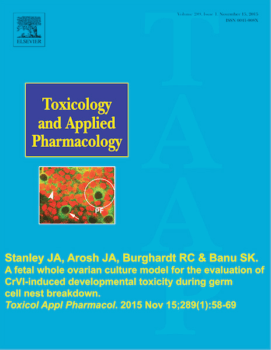Researchers Discover How Hexavalent Chromium Impacts Early Ovarian Development

Hexavalent chromium (CrVI), a toxic form of the heavy metal chromium, is widely used in more than 50 industries such as welding and painting. Due to increased usage and improper disposal, CrVI contaminates the environment, including drinking water. New research from the Texas A&M College of Veterinary Medicine & Biomedical Sciences (CVM) indicates that, despite its widespread use, CrVI can cause detrimental health effects, particularly when it comes to fetal ovarian development.
The study, which appears on the cover of Toxicology and Applied Pharmacology, examined developing rat whole fetal ovaries in cell cultures to explain how early exposure to CrVI causes cell death, known as apoptosis, in the female offspring’s developing ovaries. Ultimately, increased apoptosis during ovarian development can lead to premature ovarian failure and early menopause in the adult life.
“My main goal is to see what happens to the children if pregnant women are exposed to hexavalent chromium, since it readily crosses the placenta and directly targets the fetal organs, mainly the ovary,” said Dr. Sakhila Banu, assistant professor in the Department of Veterinary Integrative Biosciences and the lead author of the study.
Banu and other Texas A&M researchers studied the effect of CrVI on rat ovaries grown in a cell culture in the earliest stages of development—as soon as cells began to develop into ovaries. They looked at several genes and proteins that regulate the ovary’s development and the onset of apoptosis in ovarian cells.
Although it is normal for cell death to occur in some cells during the development of the ovary, accelerating apoptosis during early ovarian development can have consequences later in a woman’s life.
“Many chemicals can cause cell death,” Banu said. “If liver cells or intestinal cells are targeted they rejuvenate to a certain extent. But, every woman is born with a specific number of immature eggs, called oocytes, in the ovary. If during early development the oocytes are exposed to chromium, which particularly targets those cells, and if chromium accelerates those molecular pathways that program cell death, then you could end up with premature ovarian failure.”
Continue reading on the College of Veterinary Medicine & Biomedical Sciences website.
This article originally appeared in the Texas A&M College of Veterinary Medicine & Biomedical Sciences website.





